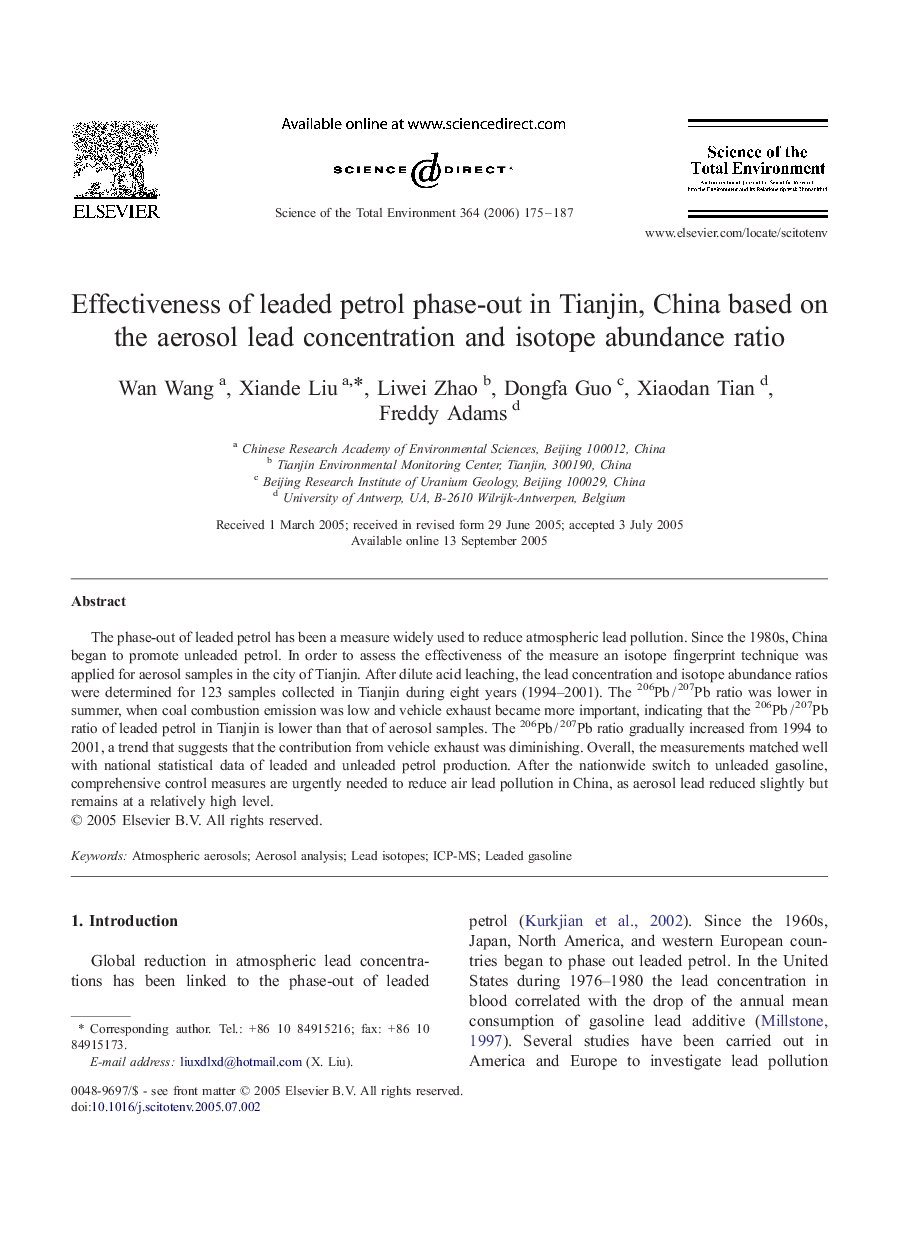| Article ID | Journal | Published Year | Pages | File Type |
|---|---|---|---|---|
| 4434165 | Science of The Total Environment | 2006 | 13 Pages |
The phase-out of leaded petrol has been a measure widely used to reduce atmospheric lead pollution. Since the 1980s, China began to promote unleaded petrol. In order to assess the effectiveness of the measure an isotope fingerprint technique was applied for aerosol samples in the city of Tianjin. After dilute acid leaching, the lead concentration and isotope abundance ratios were determined for 123 samples collected in Tianjin during eight years (1994–2001). The 206Pb / 207Pb ratio was lower in summer, when coal combustion emission was low and vehicle exhaust became more important, indicating that the 206Pb / 207Pb ratio of leaded petrol in Tianjin is lower than that of aerosol samples. The 206Pb / 207Pb ratio gradually increased from 1994 to 2001, a trend that suggests that the contribution from vehicle exhaust was diminishing. Overall, the measurements matched well with national statistical data of leaded and unleaded petrol production. After the nationwide switch to unleaded gasoline, comprehensive control measures are urgently needed to reduce air lead pollution in China, as aerosol lead reduced slightly but remains at a relatively high level.
